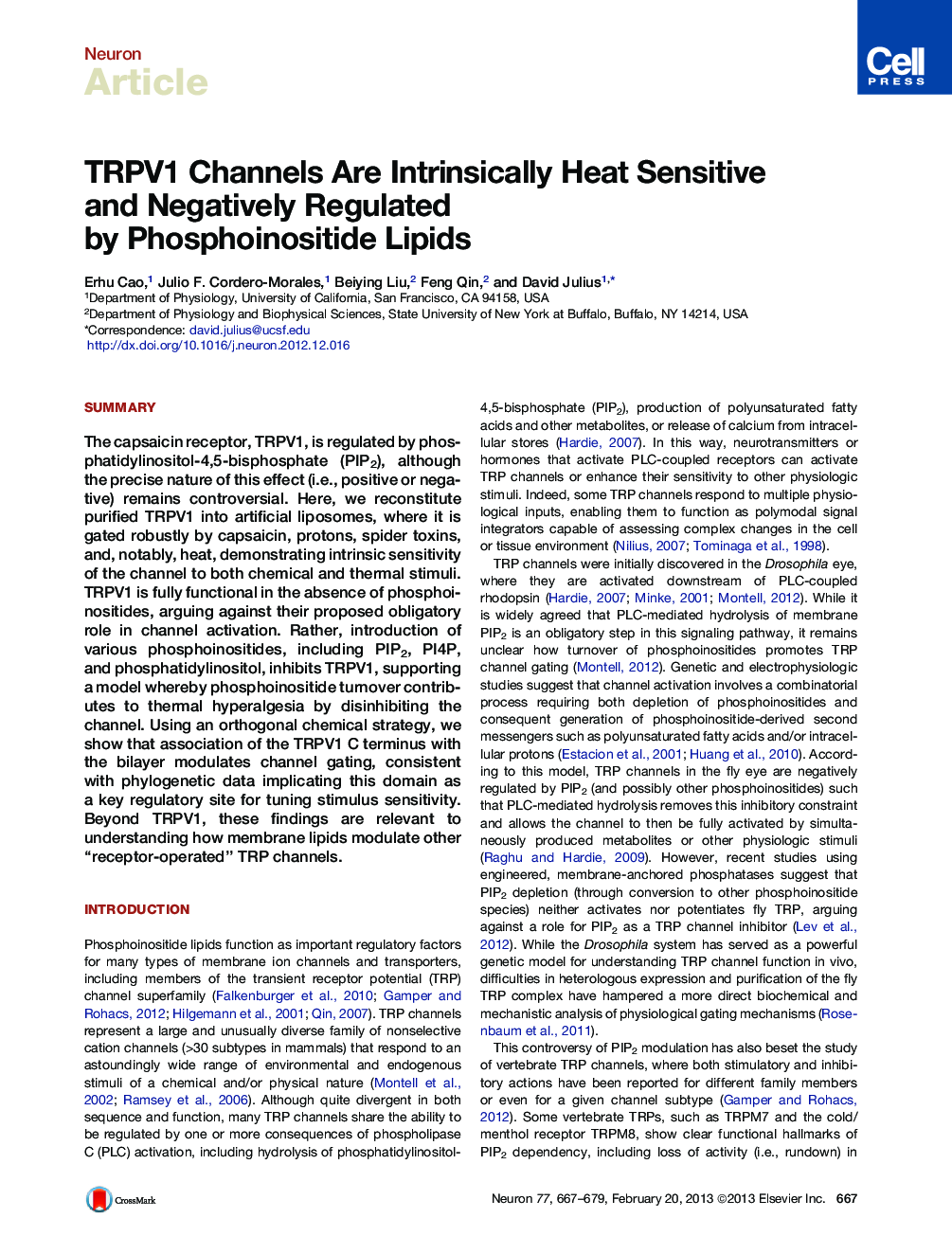| کد مقاله | کد نشریه | سال انتشار | مقاله انگلیسی | نسخه تمام متن |
|---|---|---|---|---|
| 4321363 | 1291602 | 2013 | 13 صفحه PDF | دانلود رایگان |

SummaryThe capsaicin receptor, TRPV1, is regulated by phosphatidylinositol-4,5-bisphosphate (PIP2), although the precise nature of this effect (i.e., positive or negative) remains controversial. Here, we reconstitute purified TRPV1 into artificial liposomes, where it is gated robustly by capsaicin, protons, spider toxins, and, notably, heat, demonstrating intrinsic sensitivity of the channel to both chemical and thermal stimuli. TRPV1 is fully functional in the absence of phosphoinositides, arguing against their proposed obligatory role in channel activation. Rather, introduction of various phosphoinositides, including PIP2, PI4P, and phosphatidylinositol, inhibits TRPV1, supporting a model whereby phosphoinositide turnover contributes to thermal hyperalgesia by disinhibiting the channel. Using an orthogonal chemical strategy, we show that association of the TRPV1 C terminus with the bilayer modulates channel gating, consistent with phylogenetic data implicating this domain as a key regulatory site for tuning stimulus sensitivity. Beyond TRPV1, these findings are relevant to understanding how membrane lipids modulate other “receptor-operated” TRP channels.
► TRPV1 is intrinsically heat sensitive
► TRPV1 is negatively regulated by phosphoinositide lipids
► Bioactive lipids serve as direct TRPV1 ligands
► TRPV1 C terminus tunes channel sensitivity through interaction with membrane lipids
Journal: - Volume 77, Issue 4, 20 February 2013, Pages 667–679